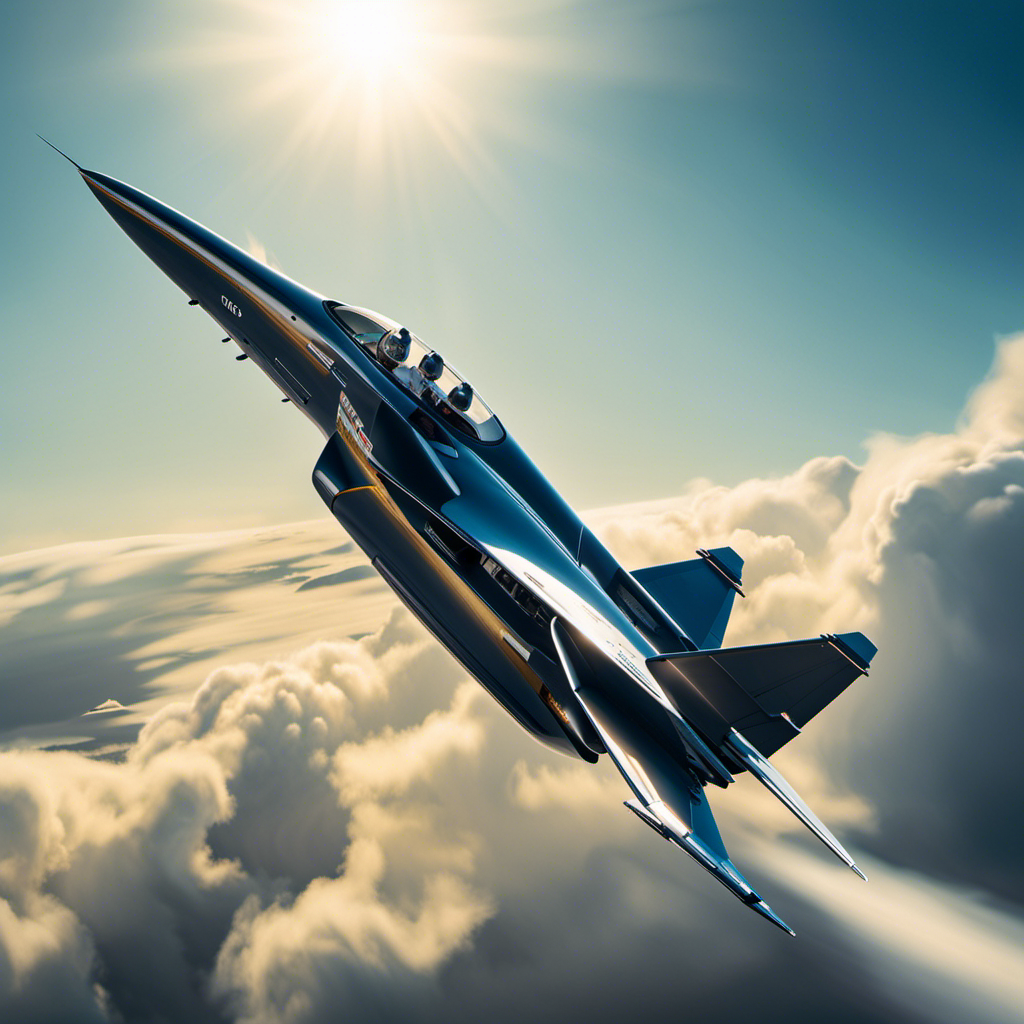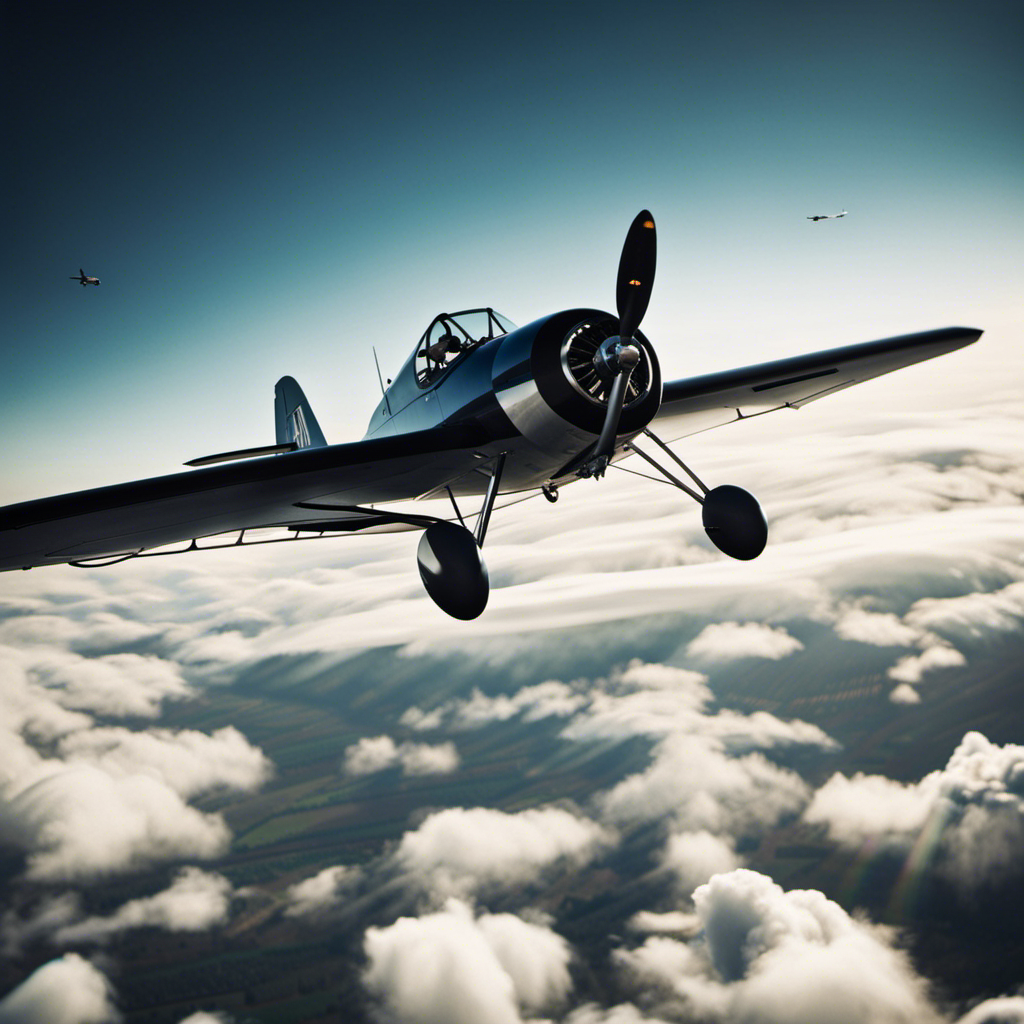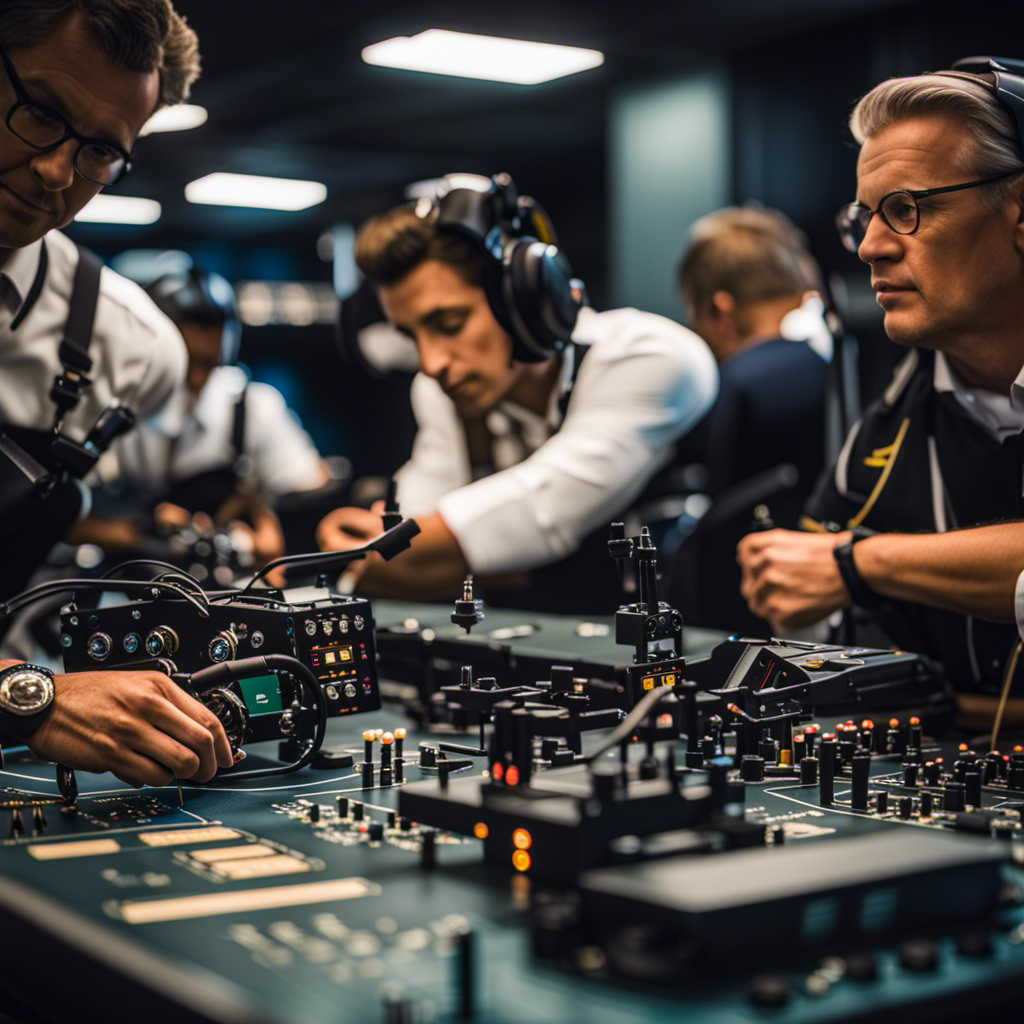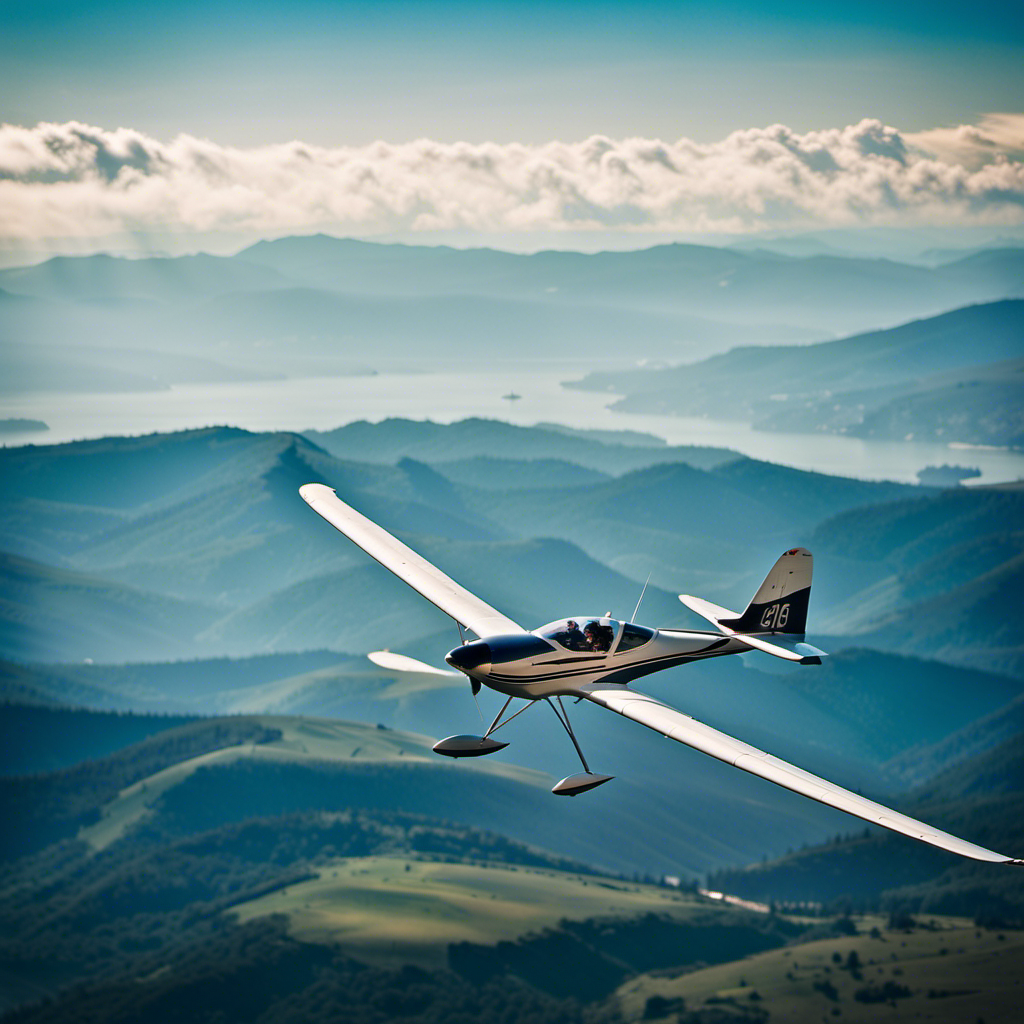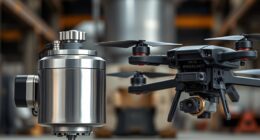Are you ready for the ultimate excitement? Get ready, because we’re about to take an exhilarating journey into the world of jet aviation.
From the basics of jet aircraft systems to mastering takeoff and landing techniques, this article will give you an insider’s perspective on what it takes to fly these fast and furious machines.
So get ready to soar through the skies as we dive into the exhilarating journey of learning to fly jet aircraft.
Key Takeaways
- Regular inspections and servicing are essential to prevent emergencies and ensure a safe flying experience.
- Simulator training provides a controlled environment for gaining experience and refining skills without endangering anyone.
- Continuous training for jet pilots is crucial to keep up with the evolving aviation industry, maintain proficiency, and enhance response to emergencies.
- Building flight hours enhances flying skills, expands knowledge base, provides networking opportunities, and contributes to career progression.
The Basics of Jet Aviation
Now, let’s dive into the basics of jet aviation and how you can learn to fly these powerful aircraft.
Jet engine technology is the heart of jet aviation. These engines work by compressing air, mixing it with fuel, and igniting it to produce thrust. Understanding how jet engines function is crucial for any aspiring pilot.
Additionally, flight planning and navigation are key aspects of jet aviation. Pilots must carefully plan their routes, taking into account factors such as weather conditions, airspace restrictions, and fuel consumption. Navigation tools like GPS and onboard instruments help pilots stay on course and ensure a safe journey.
With a solid understanding of jet engine technology and flight planning, you’ll be ready to move on to the next section about understanding jet aircraft systems.
Understanding Jet Aircraft Systems
Take a moment to familiarize yourself with the various systems of a jet aircraft. Understanding these systems is crucial for jet engine maintenance and ensuring a safe flight. Here are three key systems to know:
-
Jet Engine: The heart of the aircraft, responsible for generating thrust and powering the plane forward. Regular maintenance and inspections are necessary to keep the engine in optimal condition.
-
Avionics: This system includes all the electronic components onboard the aircraft, such as navigation aids, communication devices, and flight instruments. Understanding avionics is essential for efficient operation and communication with air traffic control.
-
Flight Controls: These controls allow the pilot to maneuver the aircraft. They include the yoke, rudder pedals, and throttle levers. Proper understanding and utilization of flight controls are vital for maintaining control during takeoff, landing, and in-flight maneuvers.
Flight School and Pilot Training
To become a skilled pilot, you’ll need to enroll in flight school and undergo comprehensive pilot training. Flight schools offer a structured curriculum designed to equip aspiring pilots with the knowledge and skills necessary to operate aircraft safely and efficiently.
The flight school curriculum typically covers a wide range of subjects, including aerodynamics, flight instruments, navigation, meteorology, and aviation regulations. Additionally, flight training involves both theoretical classroom instruction and practical hands-on experience in the cockpit.
Throughout the pilot certification process, students will progress through various stages, starting with obtaining a private pilot license and eventually advancing to more advanced certifications such as instrument rating and commercial pilot license. These certifications are obtained through rigorous training and examinations, ensuring that pilots are well-prepared for the responsibilities and challenges of flying.
Mastering takeoff and landing techniques is a crucial aspect of pilot training and will be explored in the subsequent section.
Mastering Takeoff and Landing Techniques
When practicing takeoff and landing techniques, you’ll need to focus on maintaining proper speed and altitude control throughout the entire process.
During takeoff, it is crucial to achieve the necessary takeoff acceleration to ensure a smooth lift-off. This requires gradually applying full power while simultaneously keeping the aircraft aligned with the runway. As the aircraft gains speed, you’ll need to smoothly rotate the nose up to achieve the desired pitch attitude for liftoff.
On the other hand, during landing, the deployment of the landing gear is a critical step. This ensures stability and safe touchdown. It is essential to maintain a controlled descent rate while gradually reducing speed and aligning the aircraft with the runway.
By mastering these techniques, pilots can ensure safe and precise takeoffs and landings.
Transitioning into navigating in the sky: instrument flight rules, understanding the importance of proper speed and altitude control lays the foundation for safe and efficient flight operations.
Navigating in the Sky: Instrument Flight Rules
As I navigate in the sky using instrument flight rules, it’s important to maintain accurate speed and altitude control for safe and efficient flight operations. Here are four key points to keep in mind when it comes to jet aircraft navigation:
-
Familiarize yourself with the flight instruments: Jet aircraft navigation relies heavily on the use of advanced instruments such as the altimeter, airspeed indicator, and attitude indicator. Understanding how to interpret and use these instruments is crucial for maintaining precise control.
-
Follow ATC instructions: Air Traffic Control plays a vital role in guiding jet aircraft through the airspace. It’s essential to listen carefully to their instructions and promptly comply with them to ensure safe separation from other aircraft.
-
Stay proficient in VFR procedures: While flying under instrument flight rules, it’s important to stay proficient in visual flight rules procedures as well. This includes being able to transition between IFR and VFR conditions seamlessly, as well as being aware of VFR landmarks and navigation aids.
-
Utilize advanced navigation systems: Jet aircraft are equipped with advanced navigation systems such as GPS and inertial navigation systems. Understanding how to use these systems effectively can enhance accuracy and efficiency during flight.
Advanced Maneuvers and Aerobatics
Mastering advanced maneuvers and aerobatics requires precise control and coordination of movements in the sky. These high-speed maneuvers push the limits of both the aircraft and the pilot.
One of the most exhilarating advanced aerobatic maneuvers is the vertical roll. It involves rotating the aircraft 360 degrees while climbing or descending vertically. This maneuver demands split-second decision-making and a deep understanding of aerodynamic forces.
Another impressive maneuver is the knife-edge flight. In this maneuver, the pilot flies with one wing perpendicular to the ground. Like the vertical roll, it requires precise control and coordination.
Safety is paramount during these advanced aerobatics. Emergency procedures must be ingrained in muscle memory. Understanding the proper use of ejection seats, emergency landing procedures, and the importance of wearing proper safety equipment are crucial.
Emergency Procedures and Safety Measures
To ensure your safety during advanced aerobatics, it is crucial to familiarize yourself with emergency procedures and the proper use of safety equipment. In the event of an emergency, such as an engine failure or loss of control, knowing how to react quickly and effectively can make all the difference.
Emergency landing procedures should be practiced regularly, as they require a different set of skills and techniques compared to normal landings. Additionally, staying up-to-date with aircraft maintenance is essential for preventing emergencies caused by mechanical issues. Regular inspections and servicing are vital to identify and address potential problems before they become critical.
By being prepared and knowledgeable about emergency procedures and maintaining the aircraft properly, you can minimize the risks associated with advanced aerobatics and ensure a safe experience.
Transitioning into the next section, gaining experience through simulator training offers a valuable opportunity to practice emergency procedures in a controlled environment.
Gaining Experience through Simulator Training
Simulator training provides a controlled environment for gaining experience with emergency procedures. As a jet pilot, it’s crucial to be prepared for the challenges of operating a high-performance aircraft in the real world. In the simulator, we can simulate various scenarios like engine failures, system malfunctions, and extreme weather conditions. This allows us to practice and refine our skills without putting ourselves or others in danger.
Continuous training is of utmost importance for jet pilots to keep up with the ever-evolving aviation industry and to stay proficient in handling different situations. Through simulator training, we can develop muscle memory and decision-making skills. This enables us to respond quickly and effectively when faced with emergencies.
This experience is invaluable as we progress in our careers, building flight hours and honing our abilities to handle the challenges of flying jet aircraft.
Building Flight Hours and Progressing in Your Career
As you accumulate flight hours and advance in your career, you will gain valuable experience and expertise in the aviation industry. Building flight hours is a crucial step in the process of becoming a successful pilot. Here are three ways that building flight hours can contribute to your career progression:
-
Enhancing your flying skills: The more hours you spend in the air, the more comfortable and confident you become with handling different aircraft and challenging situations.
-
Expanding your knowledge base: Each flight provides an opportunity to learn something new, whether it’s navigating through adverse weather conditions or troubleshooting mechanical issues.
-
Networking opportunities: As you accumulate flight hours, you will meet and interact with professionals in the industry, which can lead to valuable connections and potential job opportunities.
Becoming a Top Gun Pilot: Tips for Success
After years of building flight hours and honing my skills as a pilot, I was ready to take on the ultimate challenge: becoming a Top Gun pilot.
The requirements for joining this elite group of aviators were not to be taken lightly. Mental and physical preparation were key. To qualify, I had to possess exceptional flying skills, with a minimum of 1,000 flight hours under my belt. Additionally, I needed to have a spotless record, showcasing my discipline and professionalism.
But it wasn’t just about flying. The mental and physical demands of jet aviation were intense. I had to undergo rigorous training, focusing on high-G maneuvers and combat tactics. Physical fitness was paramount, requiring me to maintain peak performance to withstand the physical stress of flying at supersonic speeds.
Becoming a Top Gun pilot required dedication, determination, and a commitment to excellence.
Frequently Asked Questions
How much does it cost to become a pilot and obtain a jet aircraft license?
Becoming a pilot and obtaining a jet aircraft license can be costly. The cost of flight training varies depending on the type of aircraft and location. The steps to become a pilot include obtaining a private pilot license and then pursuing advanced training for a jet aircraft license.
What are the physical requirements for becoming a jet aircraft pilot?
To become a jet aircraft pilot, you must meet certain physical requirements and pass medical exams. These exams ensure that you have good vision, hearing, and overall health to handle the demands of flying.
How long does it typically take to complete flight school and obtain a jet aircraft license?
It typically takes about 18-24 months to complete flight school and obtain a jet aircraft license. The duration can vary depending on factors such as individual progress, training schedule, and availability of resources.
What are the job prospects and average salaries for jet aircraft pilots?
Job opportunities for jet aircraft pilots are promising, with a high demand for skilled pilots in the aviation industry. Salaries vary based on experience, type of aircraft, and employer, but can range from $70,000 to over $200,000 per year.
Are there any age restrictions or limitations for becoming a jet aircraft pilot?
Age restrictions for becoming a jet aircraft pilot vary by country and airline, but generally range from 18 to 65 years old. Training requirements include obtaining a private pilot license, instrument rating, and commercial pilot license.
Conclusion
In conclusion, learning to fly jet aircraft is an exciting and challenging endeavor. By understanding the basics of jet aviation and mastering the various systems, one can become a skilled pilot.
Flight school and pilot training provide the necessary knowledge and skills, while practicing takeoff and landing techniques ensures safe operations.
Navigating using instrument flight rules and knowing emergency procedures are crucial for a pilot’s safety. Simulator training offers valuable experience, and building flight hours is essential for career progression.
So, buckle up and get ready to soar through the skies like a true Top Gun pilot!
